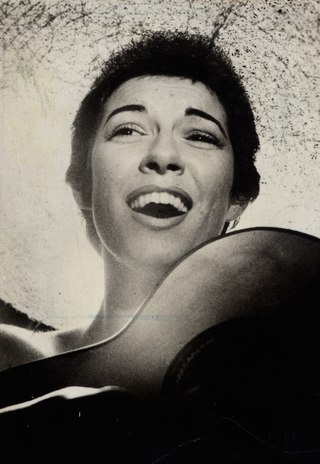
The music of Brazil encompasses various regional musical styles influenced by European, American, African and Amerindian forms. Brazilian music developed some unique and original styles such as forró, repente, coco de roda, axé, sertanejo, samba, bossa nova, MPB, gaucho music, pagode, tropicália, choro, maracatu, embolada, frevo, brega, modinha and Brazilian versions of foreign musical styles, such as rock, pop music, soul, hip-hop, disco music, country music, ambient, industrial and psychedelic music, rap, classical music, fado, and gospel.

São Paulo is one of the 26 states of the Federative Republic of Brazil and is named after Saint Paul of Tarsus. A major industrial complex, the state has 21.9% of the Brazilian population and is responsible for 33.9% of Brazil's GDP. São Paulo also has the second-highest Human Development Index (HDI) and GDP per capita, the fourth-lowest infant mortality rate, the third-highest life expectancy, and the third-lowest rate of illiteracy among the federative units of Brazil. São Paulo alone is wealthier than Argentina, Uruguay, Paraguay, and Bolivia combined. São Paulo is also the world's twenty-eighth-most populous sub-national entity and the most populous sub-national entity in the Americas.

The viola caipira, often simply viola or brazilian viola, is a Brazilian ten-string guitar with five courses of strings arranged in pairs. It was introduced in the state of São Paulo, where it is widely played as the basis for the música caipira, a type of folk-country music originating in the Caipira country of south-central Brazil.

Caipiras are a traditional people from the Centre-South of Brazil, the term "caipira" probably originating from Tupi language, originally means "bush cutter", having been identified as a printed symbol for the first time in 1872. The first Caipiras were the bandeirantes, who received this denomination through the Guaianá people who inhabited the region of the Médio Tietê, in São Paulo.

Ignez Magdalena Aranha de Lima Barroso was a Brazilian sertanejo singer, guitarist, actress, TV presenter, librarian, folklorist and teacher.
Música sertaneja or sertanejo is a music style that had its origins in the countryside of Brazil in the 1920s. Its contemporary developments made it the most popular music style in 2000s and 2010s Brazil, particularly throughout the southern/southeastern and center-western countryside Brazil. Subgenres include sertanejo raiz, sertanejo romântico, and sertanejo universitário.
Tião Carreiro & Pardinho is a Brazilian sertanejo musical duo.

Ivan Vilela is a Brazilian composer, arranger, researcher, teacher and viola caipira player. Ivan Vilela is currently a professor at the ECA - School of Communication and Arts of the University of São Paulo. He is the director of the Orquestra Filarmônica de Violas, a Brazilian orchestra composed by Brazilian violas. Ivan Vilela is one of the main ten-string guitarists (viola) nowadays. With a special style and very developed technique, he has more than 15 albums recorded, solo or with different groups, and was nominated for and awarded several prestigious prizes in Brazil.

The viola de Queluz is a stringed instrument from Queluz, Brazil. It has 12 strings in 5 courses. The lower 2 are tripled, and the rest are doubled.

Events of the year 1909 in the Brazil.

Events in the year 1954 in Brazil.

Events in the year 2015 in Brazil:

Events in the year 1953 in Brazil.

Events in the year 1996 in Brazil.

Events in the year 2000 in Brazil.

Events in the year 1995 in Brazil.

Ruth Guimarães Botelho was the first Afro-Brazilian author to gain a national audience and critical attention for her novels, short stories, and poetry. A classical scholar, she translated works from French, Italian and Spanish and studied Greek and Latin, though her works reflected fables, folklore, herbal medicines and legends of Afro-Brazil. She established several cultural preservation societies, served as head of the Ministry of Culture for Municipality of Cruzeiro, São Paulo, and was a member of the São Paulo Academy of Letters.
The Trófeu Raça Negra is a Brazilian award which is handed out to individuals and groups who have contributed or exhibited advancements for Afro-Brazilians. Organized by the NGO Afrobras, it was first handed out in 2000 on the 500th anniversary of the European arrival in Brazil, and has been held annually since 2004. It is similar to the NAACP Image Award in the United States.

Alucinação is a 1976 studio album by Brazilian singer-songwriter Belchior. Recorded at PolyGram, it is the singer's second album. It features hit songs like "Apenas um Rapaz Latino-Americano", "Como Nossos Pais" and "Velha Roupa Colorida". The album sold 30,000 copies in a single month, and more than 500,000 copies in total.

Paulistania was a proposal by Joaquim Ribeiro, in his work Folklore dos Bandeirantes, from 1946, to describe what he would call "the living space of the old paulists". It was made up of the states of São Paulo, parts of Paraná, parts of the Triângulo Mineiro, the south of Minas Gerais and Goiás, the states of Mato Grosso do Sul and parts of Mato Grosso, a field of influence and exploration by the bandeirantes.














